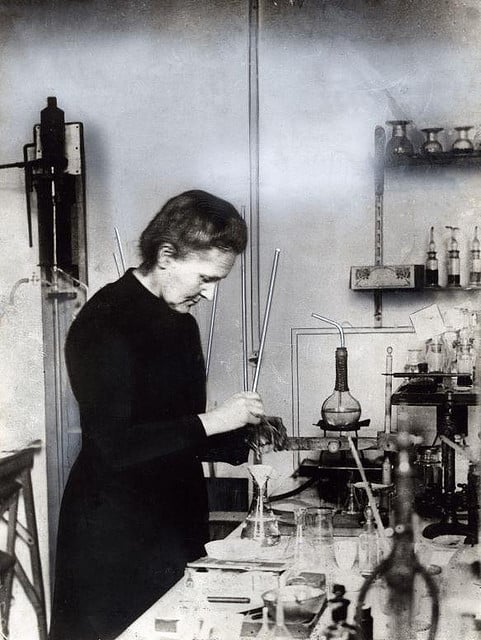Marie Curie
By:
November 7, 2012

The first woman to win a Nobel Prize (and then a second), MARIE CURIE (Marie Skłodowska, 1867 – 1934) was the green flash on the horizon of the Radium Age. Born in Warsaw, Curie’s early years were a calamitous mix of talent, poverty, and detours. But setbacks that might easily have become permanent — long stints working as a governess, denial of university access because of her sex, struggles with illness and heartbreak, financial woes — only served as additional data to be comprehended and controlled. Curie left Poland to complete her studies at the Sorbonne, where she also met her husband and collaborator, Pierre Curie. The Curie’s independent lab was basically an unheated, leaky shed, where the day-to-day work often had all the glamour of spinning straw into gold — for example, in order to isolate one-tenth of a gram of radium chloride, more than a ton of pitchblende had to be ground with a mortar and pestle. But guided by unerring insight, Curie’s painstaking pursuit of the elusive elements would lead to her greatest achievements: the discovery of polonium and radium, the coining and comprehension of radioactivity, the first female professorship at the Sorbonne, and the Nobel Prizes (in physics and chemistry). Sadly, radiation’s toxic effects took their toll; everything the Curies worked with was saturated with radioactivity, and she had often kept samples in her desk, or carried them in her pockets. Her papers — from the 1890s! — remain too dangerous to handle. In 1934, Curie succumbed to aplastic anemia caused by the effects of long-term exposure to radioactivity; however, the inspiration emitted by her life and work has still not reached its half-life.
***
On his or her birthday, HiLobrow irregularly pays tribute to one of our high-, low-, no-, or hilobrow heroes. Also born this date: Albert Camus and King Kong Bundy.
READ MORE about members of the Anarcho-Symbolist Generation (1864–73).
